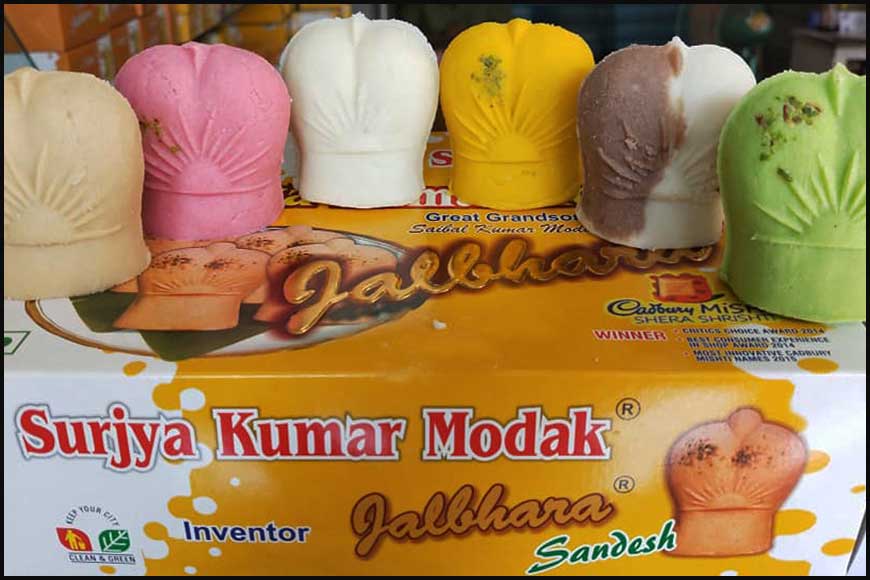Jalbhora Taalshash – the sweet made to dupe a son-in-law!

Bengalis are famous for their sweet-tooth and why not? The state boasts of some of the best confectioners in the country. The prominent presence of sweets in Bengali cuisine can be noted throughout history. Ancient Bengal was known as ‘Gauda Banga’, a name believed to have originated from the term ‘Gur’ or molasses that were harvested in abundance in the region. The early Bengali sweets were made from the delicious jaggery or molasses and coconuts. The practice of using ‘chhana’ came much later with colonial invasions.
The introduction of ‘chhana’ (cottage cheese) in Bengali cuisine happened after the Portuguese traders settled in Bengal in the 17th century. The curdling of milk with an acidic substance was forbidden according to Hindu tradition and it could not be offered to the deities. But the Portuguese tradition of making sweets with cheese inspired the local cuisine as well. The chhena used for making sandesh is said to have come from the Middle-European quark, a soft cheese made out of curd. The chhena we use is very similar to the pot cheese popular in Germany.
![]() The iconic sweet from Bengal's Surjya Modak
The iconic sweet from Bengal's Surjya Modak
The Bengali confectioners then picked up this incredible art of curdling milk and creating mouth-watering ‘sandesh’ and ‘rosogollas’ among others. And now, most of the characteristic Bengali sweets are made primarily from fresh ‘chhana’ (cottage cheese) and sugar.
Although the name ‘sandesh’ is mentioned in medieval Bengali literature, including Krittibas’ Ramayana and lyrics of Mahaprabhu Chaitanya Dev, but the ingredient used for making the former ‘sandesh’ is not known. Probably it was not made from cottage cheese as the Vaishnavites and Brahmins considered it an impure form of milk. In Bengal, the present form of Sandesh from cottage cheese was made famous by three confectioners, Bhola Maira (1775-1851), Bhim Nag (1809-1885) and Girish Chandra Dey (outlet opened in Kolkata in 1844).
While the world of Bengali sweets is expansive, there are few that have attained ‘cult’ status not only among Bengalis, but in the other parts of the country and the world, too. Amusingly, some of these sweets have very unique names along with interesting origin stories. According to records, Hooghly was the first district in the state where ‘Moiras’ (the community of sweetmeat makers) used chhena for making sandesh. They mixed the chhena with sugar or jaggery and then mashed to a smooth paste and shaped them to resemble different fruits, vegetables and even birds and animals etc. This brings us to the story of the discovery of a unique sweetmeat named Jolbhara Talshaansh (palm fruit or ice apple) Sandesh, which, when translated, means sandesh filled with water. Also called taal shaansh (ice apple) sandesh, this is the sweet makers’ version of the palm fruit. Shaped like the palm fruit aka ice apple, the exterior of the sandesh is white, hard and rotund shaped like the fruit, but its core is filled with rose flavoured syrup or ‘Nolen gur’ (date palm jiggery in winter) so when you bite into the sweet, the sugar syrup oozes out just like water oozes out from the fruit.
From the late 18th century, after the Battle of Plassey, the zamindars, who were actually the landholders of demarcated areas, responsible for collecting revenue for the British East Indian Company, grew very powerful, establishing their image as landed aristocrats, and taking honorary royal titles such as “Raja” and “Maharaja”. The year was 1818 and the Banerjee family was the reigning ‘Boro’ zamindar of Telenipara, Bhadreswar. A daughter of the Banerjee family was married to the son of the zamindar of Baidyabati. After the marriage was over and the bride left for her in-laws’ house, they were to return to the bride’s house as part of the post-wedding Jamai-Sasthi ritual.
According to legend, the zamindar’s wife and the bride’s siblings wanted to embarrass the groom and make fun of him. So, the famous confectioner, Surjya Kumar Modak was summoned and ordered to create something unique for the occasion in secrecy. Modak and his son, Siddheshwar raked their brains and came up with the idea of the enormous kora paak (hard core) ‘Taalshansh’ sandesh, with the core filled with rosewater surup.
 The varied flavours of the Jalbhora Taalshash
The varied flavours of the Jalbhora Taalshash
On the scheduled day, the bride and groom arrived and they were welcomed ceremoniously. The groom was served food and offered the new sandesh. The unsuspecting groom took a bite and lo behold! The syrup spilled out and his face as well as his costly silk ‘panjabi’ (the groom’s dress) was smeared with the sticky syrup. His sisters-in-law and other members of the Banerjee family laughed at the poor groom’s expense. The zamindar was happy and named this new sweet Jalbhora. He not only rewarded Modak generously but also told him that in the future, other ‘moiras’ would invariably copy his creation, but since Modak was the invetor, his Jalbhora would stand upright in the display shelf but the Jalbhara made by others would be made to lie down on the trays.
Rabindranath Tagore was also fond of Modak’s Jalbhora sandesh. Modak was not only a brilliant sweetmeat maker but he was also interested in the literary world. He was fond of writing poems. His Panchali, Geet Govinda is still preserved in the French Museum in Chandarnagore. After Surjya Modak’s demise, his successors have been carrying on his legacy and the sweet journey continues.
Image courtesy: Facebook profile- Surjya Kumar Modak









